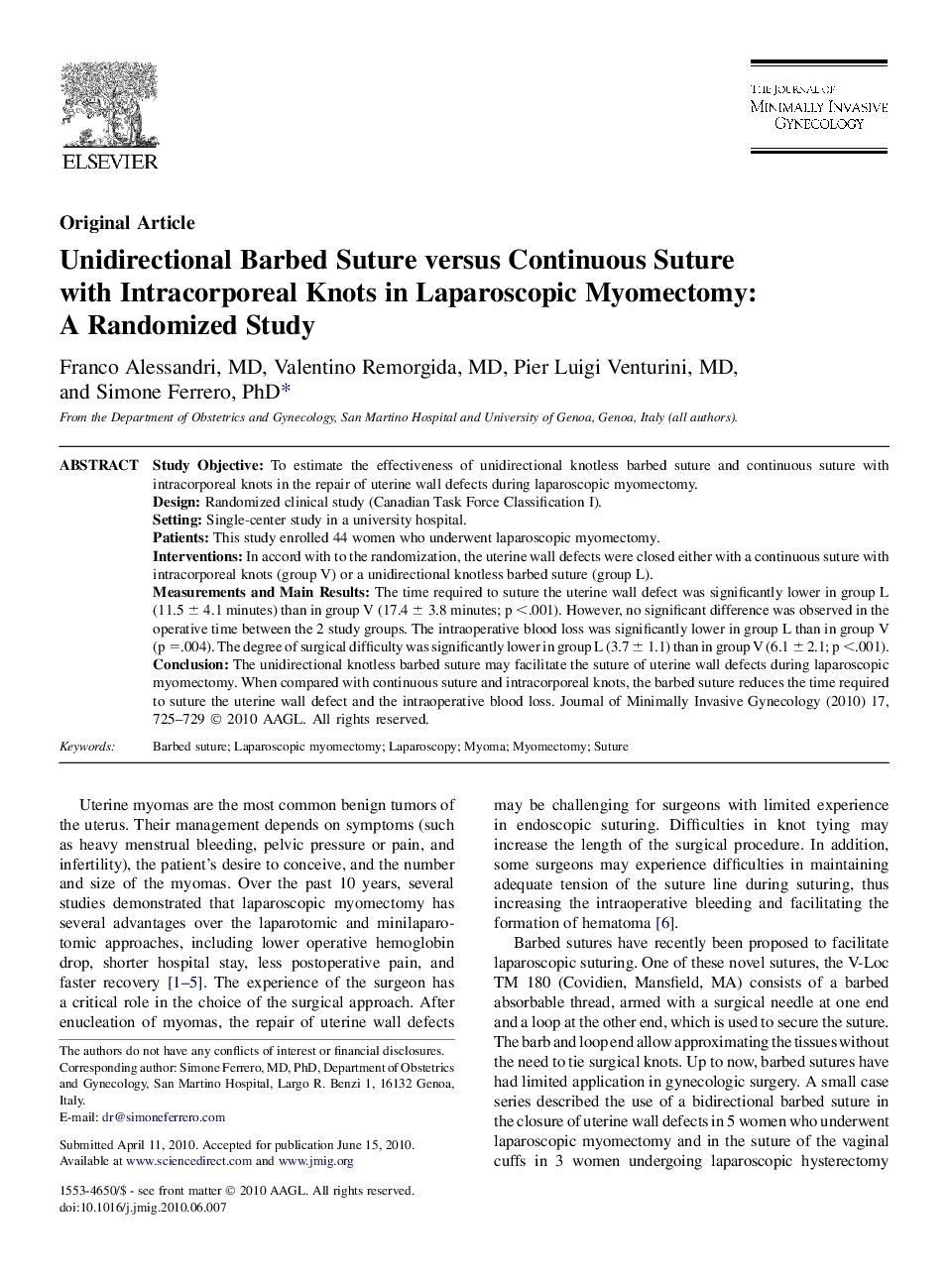| Article ID | Journal | Published Year | Pages | File Type |
|---|---|---|---|---|
| 3959413 | Journal of Minimally Invasive Gynecology | 2010 | 5 Pages |
Study ObjectiveTo estimate the effectiveness of unidirectional knotless barbed suture and continuous suture with intracorporeal knots in the repair of uterine wall defects during laparoscopic myomectomy.DesignRandomized clinical study (Canadian Task Force Classification I).SettingSingle-center study in a university hospital.PatientsThis study enrolled 44 women who underwent laparoscopic myomectomy.InterventionsIn accord with to the randomization, the uterine wall defects were closed either with a continuous suture with intracorporeal knots (group V) or a unidirectional knotless barbed suture (group L).Measurements and Main ResultsThe time required to suture the uterine wall defect was significantly lower in group L (11.5 ± 4.1 minutes) than in group V (17.4 ± 3.8 minutes; p <.001). However, no significant difference was observed in the operative time between the 2 study groups. The intraoperative blood loss was significantly lower in group L than in group V (p =.004). The degree of surgical difficulty was significantly lower in group L (3.7 ± 1.1) than in group V (6.1 ± 2.1; p <.001).ConclusionThe unidirectional knotless barbed suture may facilitate the suture of uterine wall defects during laparoscopic myomectomy. When compared with continuous suture and intracorporeal knots, the barbed suture reduces the time required to suture the uterine wall defect and the intraoperative blood loss.
